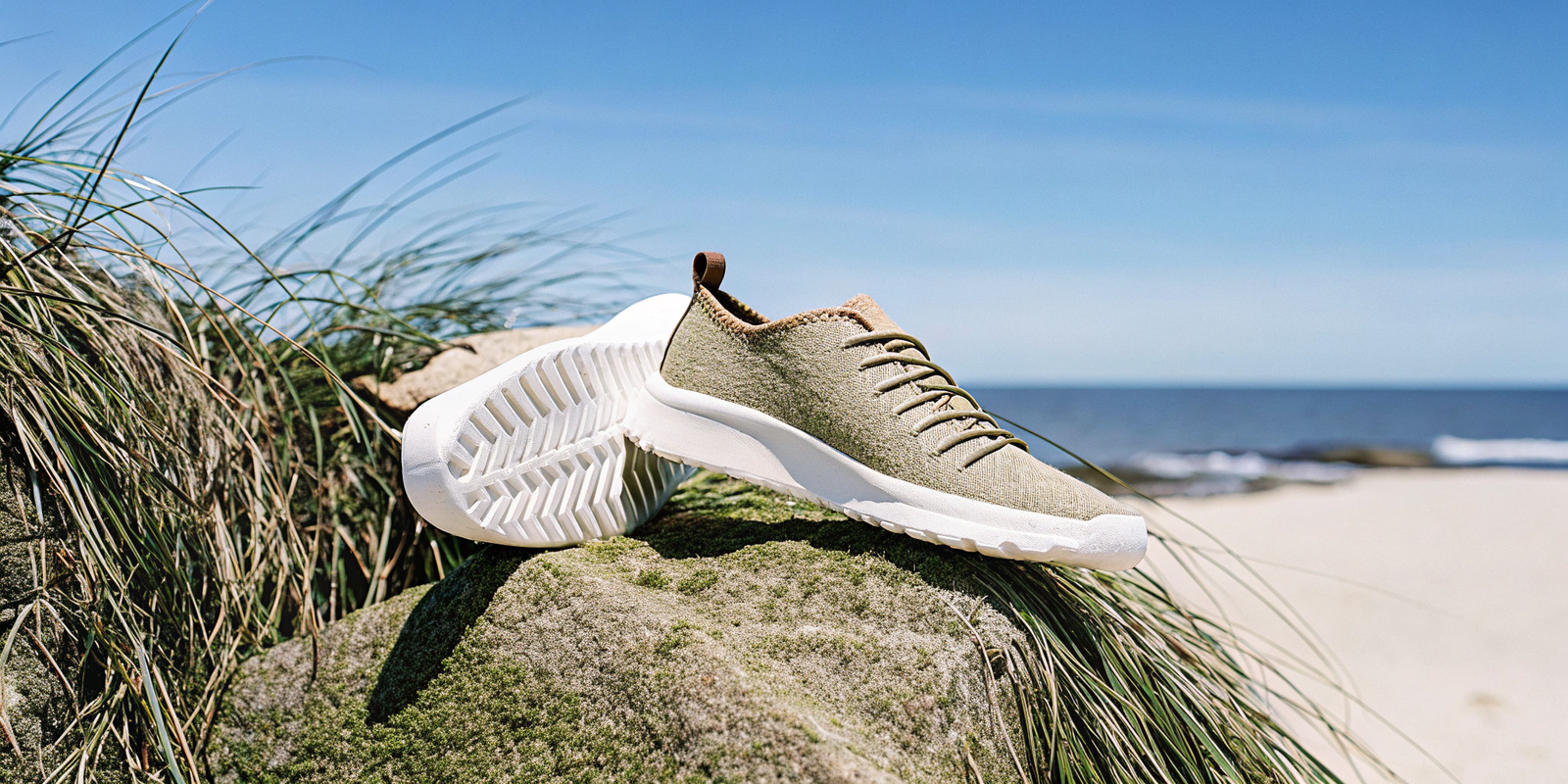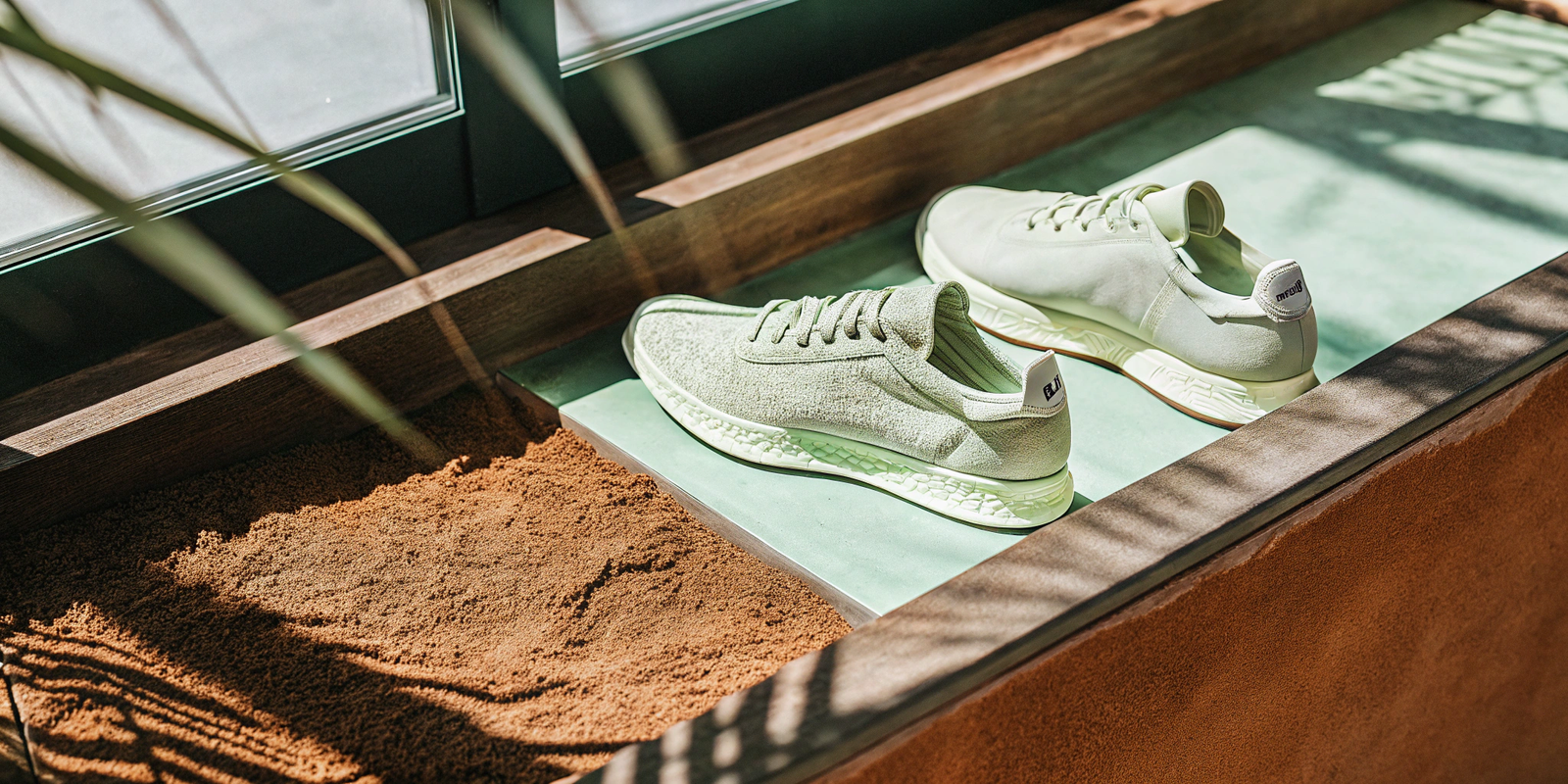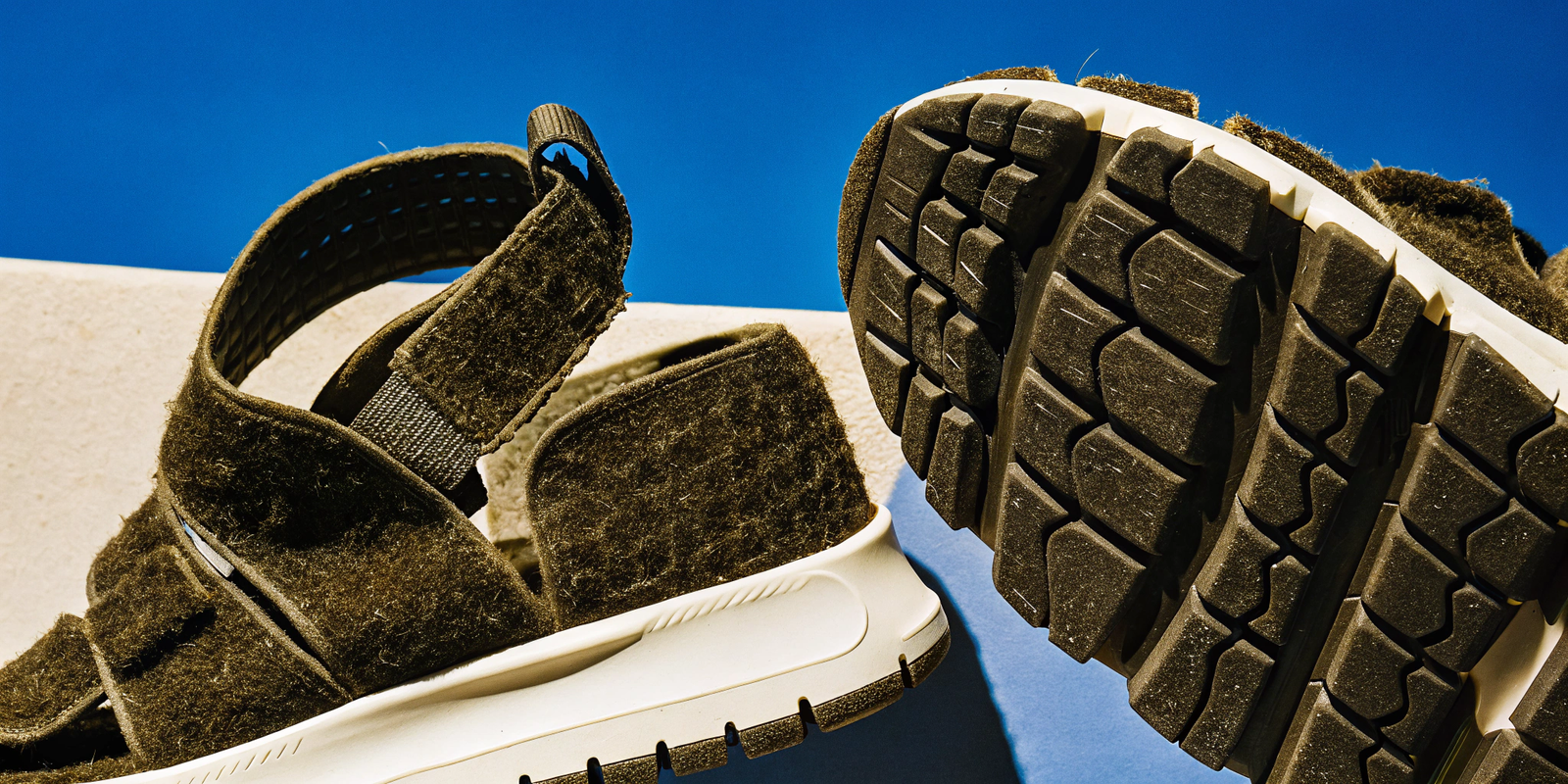- Problem:As consumers, we're becoming more aware of the environmental footprint of our purchases, and conventional footwear often relies on synthetic materials that contribute to pollution and landfill waste. Agitation: It's disheartening to buy stylish shoes knowing they might be harming the planet, leaving you searching for truly sustainable alternatives that deliver both performance and eco-consciousness. Solution: Breakthroughs in biomaterials, particularly those derived from seaweed and algae, are paving the way for a revolutionary wave of eco-footwear, offering a compelling vision for a more sustainable and earth-friendly future in shoe production.
Seaweed and algae are emerging as promising sustainable alternatives in footwear production, providing bio-based materials for foams, textiles, and coatings that can significantly reduce reliance on fossil fuels and mitigate environmental impact. These innovative materials offer properties like breathability, lightness, and even odor resistance, making them viable for performance and casual eco-footwear, while contributing to pollution remediation and carbon sequestration during their growth.
In my two decades plus in the shoe industry at Lucas, I've seen countless material innovations. What excites me most about seaweed and algae is their potential to truly move the needle on sustainability. This isn't just a trend; it's a fundamental shift in how we think about footwear.
How is Seaweed Used in Footwear Production? Problem: While the concept of using seaweed in shoes sounds intriguing, it's not immediately obvious how a marine plant can transform into durable, comfortable footwear components. Agitation: You might be skeptical about its practicality or wonder if it's merely a niche experiment rather than a scalable solution for mainstream shoe manufacturing. Solution: Seaweed is actually incredibly versatile and is being processed in various ingenious ways to create sustainable materials that form integral parts of modern eco-friendly footwear, from uppers to midsoles.
Seaweed is being incorporated into footwear production in several innovative ways, primarily as a bio-based raw material for foams, fibers, and coatings. It can be processed into flexible, lightweight foams for shoe midsoles—offering cushioning with a significantly reduced fossil-fuel footprint—or spun into yarns for breathable, durable shoe uppers and linings. Additionally, seaweed extracts are being explored for natural dyes or bio-based adhesives, all contributing to a more sustainable and less petrochemical-dependent shoe.

At Lucas, we are always exploring new materials that align with our commitment to sustainable development. Seaweed, for us, represents a huge opportunity to innovate beyond traditional synthetics, something our customers are increasingly asking for.
Specific Applications of Seaweed in Footwear
- Midsole Foams (Algae-based Foams are key here):
- One of the most prominent uses. Certain microalgae are harvested from freshwater sources. They are then processed into a soft, flexible foam.
- Brands like Bloom Foam and OrthoLite have pioneered this. They blend algae biomass with EVA (Ethyl Vinyl Acetate). This partially replaces petroleum-based plastics.
- These foams are used in shoe midsoles and insoles. They offer cushioning and lightweight properties.
- Environmental Benefit: Harvesting algae can help clean polluted waterways. It removes excess nutrients. It sequesters carbon dioxide as it grows.
- Textiles and Yarns for Uppers and Linings:
- Seaweed can be processed into fibers. These fibers can be spun into yarns. These yarns are then woven into fabrics.
- These fabrics can be used for shoe uppers, linings, or laces. They often have properties like breathability and moisture-wicking. Some may even have antimicrobial properties.
- Brands like VEJA have experimented with materials that blend seaweed with other bio-based components for their uppers.
- Coatings and Dyes:
- Seaweed extracts can be used as natural dyes. They offer a sustainable alternative to synthetic colorants.
- They are also being explored for bio-based coatings. These coatings can provide water repellency or enhance material durability. They do this without toxic chemicals.
- Bio-based Adhesives:
- Researchers are looking into seaweed polysaccharides as binders. These could replace petroleum-based glues. Shoe manufacturing uses a lot of adhesives. This is a significant area for sustainability improvement.
- Reinforcement and Components:
- Seaweed can be processed into stiff materials. These can be used for structural components. Examples include toe caps or heel counters. This replaces traditional plastic stiffeners.
The beauty of seaweed and algae as raw materials is their rapid growth and renewable nature. They don't require arable land or fresh water. They often grow in abundance, even in polluted environments, turning a problem into a resource. This makes them highly attractive for future sustainable footwear.
How Seaweed and Algae Transform into Footwear Materials
| Material Type | Source/Process | Footwear Application | Environmental Benefit |
|---|---|---|---|
| Algae-based Foam | Microalgae biomass (harvested from freshwater) + EVA/others | Midsoles, Insoles, Outsoles | Reduces reliance on petroleum, cleans waterways, sequesters CO2. |
| Seaweed Fibers/Yarn | Processed seaweed (e.g., kelp, red algae) into cellulosic fibers | Uppers, Linings, Laces | Renewable resource, biodegradable, potentially less water/energy. |
| Seaweed-derived Dyes | Extracts from specific seaweed species | Natural coloring for textiles and components | Non-toxic alternative to synthetic dyes, lower chemical footprint. |
| Bio-adhesives | Polysaccharides from seaweed | Bonding various shoe components | Reduces use of fossil-fuel derived glues, potentially biodegradable. |
| Bioplastics | Algae or seaweed derivatives | Structural components, eyelets, stiffeners | Replaces conventional plastics with bio-based alternatives. |
Which Brands Are Making Algae-Based Sneakers? Problem: When an exciting new sustainable material like algae-based foam emerges, it's natural to wonder which forward-thinking brands are actually adopting it and bringing these innovations to market. Agitation: Without knowing who's leading the charge, it can be hard to identify truly eco-conscious options, making it difficult to support brands that align with your values. Solution: Several well-known and innovative footwear brands have already embraced algae-based materials, primarily for their cushioning components, signaling a significant shift towards more sustainable practices in mainstream sneaker production.
A growing number of prominent footwear brands are integrating algae-based materials into their sneakers, predominantly through partnerships with specialized biomaterial companies like Bloom Foam. Brands such as Adidas, Reebok, Allbirds, and Native Shoes have launched products featuring algae-based midsoles or insoles, demonstrating a commitment to reducing their environmental footprint by replacing conventional petroleum-derived foams with more sustainable, bio-based alternatives.

At Lucas, we’re keeping a close eye on these developments. Brands are not just looking for sustainable materials; they want proven, scaled solutions. We aim to be at the forefront of offering these new options to our clients as they become commercially viable and widely available.
Leading Brands Using Algae-Based Materials in Footwear
- Adidas:
- One of the pioneers. They use Bloom Foam in several of their performance and casual lines.
- Examples include certain models of the Terrex outdoor range or specific running shoes.
- They highlight the environmental benefits. This includes the cleaning of water used in algae harvesting.
- Reebok:
- Reebok, also part of the Adidas group, has incorporated Bloom Foam into some of its Floatride Energy running shoes.
- This shows a commitment across different brand segments to more sustainable materials.
- Allbirds:
- Known for their focus on natural and sustainable materials. They use sweet foam (sugarcane-based) for midsoles. They also use other plant-based materials.
- While not solely algae-based, they share the ethos. They drive innovation in bio-based footwear materials. They often blend different sustainable components. Some of their insoles also feature algae.
- Native Shoes:
- This brand specializes in lightweight, casual footwear. They have launched shoes featuring "Bloom algae foam" in their uppers and midsoles.
- They emphasize the comfort and eco-friendly aspects of these materials.
- Vivobarefoot:
- A minimalist footwear brand. They have developed a line of shoes using Bloom Foam.
- This aligns with their philosophy of connecting people to nature. They use natural and recycled materials.
- Timberland:
- Has explored using Bloom Foam in some of their insoles and casual shoes. This is part of their broader commitment to sustainable sourcing.
It is important to note that while these brands use algae-based components, the entire shoe might not be 100% algae-derived. Often, these materials are integrated into specific parts like midsoles or insoles. Continuous research and development are pushing for higher percentages of bio-based materials in footwear.
Brands and Their Use of Algae-Based Materials
| Brand | Primary Application of Algae-Based Material | Specific Models/Lines (Examples) | Key Sustainability Driver |
|---|---|---|---|
| Adidas | Midsoles, Insoles | Terrex (some models), Specific running shoes (concept models) | Reducing fossil fuel reliance, water cleaning (via Bloom Foam). |
| Reebok | Midsoles, Insoles | Floatride Energy (some versions) | Part of broader sustainable material integration. |
| Allbirds | Insoles, Other bio-based blends | Tree Dashers, Wool Runners (their insoles often feature blends) | "Nature-first" material strategy, carbon neutral goals. |
| Native Shoes | Uppers, Midsoles | Jefferson Bloom, Fitzsimmons CityLite | Lightweight, casual eco-friendly footwear. |
| Vivobarefoot | Midsoles, Insoles | Primus Lite III, certain minimalist styles | Connecting to nature, minimal impact materials. |
| Timberland | Insoles | Select casual and outdoor shoes | Commitment to responsible sourcing and environmental stewardship. |
Are Shoes Made from Seaweed and Algae Durable? Problem: When you hear about shoes made from unconventional materials like seaweed and algae, a natural concern arises about their durability, especially if you're used to the long-lasting performance of traditional synthetics. Agitation: You might fear that choosing an eco-friendly option means sacrificing the lifespan of your footwear, leading to quicker wear and more frequent replacements, which defeats the purpose of sustainability. Solution: While still an evolving field, shoes incorporating seaweed and algae components are demonstrating impressive durability, often matching or even exceeding the performance of their conventional counterparts, thanks to advanced material science and smart design.
Shoes made from seaweed and algae components are proving to be durable, often comparable to or exceeding the performance of traditional petroleum-based materials. Algae-based foams for midsoles, like those from Bloom Foam, are engineered to provide resilient cushioning and lasting rebound. Seaweed-derived textiles, when properly processed and blended, can offer similar tensile strength and abrasion resistance to conventional fabrics. Ongoing material science research continues to enhance the longevity and performance of these bio-based innovations.

Durability is a non-negotiable for Lucas. A sustainable shoe that falls apart quickly isn't truly sustainable. We evaluate every new material not just for its environmental impact, but for its performance and longevity. The advancements in bio-based materials are truly impressive.
Factors Contributing to the Durability of Seaweed/Algae Footwear
- Engineered Formulations for Algae-based Foams:
- Companies like Bloom Foam don't just use pure algae. They blend the algae biomass with traditional EVA (ethylene-vinyl acetate) or other polymers. This creates a specific foam formulation.
- This blend is carefully engineered. It ensures properties like durability, rebound, and compression set. These are crucial for long-lasting cushioning in midsoles.
- The goal is to match or exceed the performance of 100% petroleum-based foams.
- Versatility of Algae/Seaweed as a Base Polymer:
- Algae and seaweed contain natural polymers. These polymers have properties similar to plastics when processed correctly.
- They can be rigid or flexible. They can be water-resistant. This allows for diverse applications in footwear.
- Blending with Other Durable Materials:
- Often, seaweed or algae materials are not used in isolation. They are blended with recycled synthetic fibers or other bio-based materials.
- For example, a shoe upper might use a textile blended from seaweed fiber and recycled polyester. This creates a highly durable composite material.
- Testing and Certification:
- Reputable brands and material suppliers rigorously test their products. They test for wear, tear, and performance.
- They conduct laboratory tests for abrasion resistance, tensile strength, and flex fatigue. This ensures the materials meet industry standards for footwear durability.
- Continuous Improvement in Material Science:
- The field of biomaterials is advancing rapidly. Researchers are constantly improving the processing techniques. They are also developing new formulations.
- This continuous innovation directly translates to enhanced durability and performance for seaweed and algae-derived materials. They are becoming more robust with each iteration.
- Design Considerations:
- The overall design of the shoe plays a role. Good construction, proper stitching, and reinforcement at stress points contribute to durability.
- Even with innovative materials, a well-engineered shoe design is key to its lifespan.
While these materials are relatively new to the broader footwear market, initial results and ongoing research suggest that shoes made with seaweed and algae components are robust and can offer equivalent or even superior performance to their conventional counterparts. This makes them a truly viable and sustainable option for the future of footwear.
Durability Aspects: Traditional vs. Algae/Seaweed Based Materials
| Feature | Traditional Petroleum-based Materials (e.g., EVA, Polyester) | Algae/Seaweed-based Materials (e.g., Bloom Foam, Seaweed textiles) | Outlook for Algae/Seaweed Durability |
|---|---|---|---|
| Foam Resiliency | Excellent, well-established (e.g., EVA midsoles retain bounce over time). | Comparable/Improving: Engineered blends (algae + EVA/other polymers) achieve robust rebound and compression set. | Very Positive: Continuous R&D focuses on matching/exceeding traditional foam performance. |
| Textile Strength | High tensile strength, good abrasion resistance (e.g., polyester uppers). | Good/Comparable: When processed correctly and blended, can offer substantial strength and abrasion resistance. | Positive: As fiber processing refines, expect wider application in high-wear areas. |
| Longevity | Proven long lifespan, widely used for decades. | Promising: Real-world testing by leading brands indicates acceptable long-term performance. | Strong: Brands are launching these with confidence in their lifespan; not "disposable" eco-shoes. |
| Eco-Benefit Link | Durability is often offset by environmental impact of production/disposal. | Durability combined with renewable sourcing, lower carbon footprint, and sometimes biodegradability. | Double Benefit: Offers both performance AND significantly reduced environmental impact. |
| Current Adoption | Dominant in the market. | Growing, primarily in midsoles and some uppers. | Increasing: More brands adopting as manufacturing scales and costs decrease. |
Seaweed and algae are at the forefront of eco-footwear innovation. They transform into versatile materials for foams, textiles, and coatings due to their renewable properties. Brands like Adidas and Allbirds are already integrating these materials into durable sneakers. This signifies a promising future for sustainable shoe production without compromising performance.
